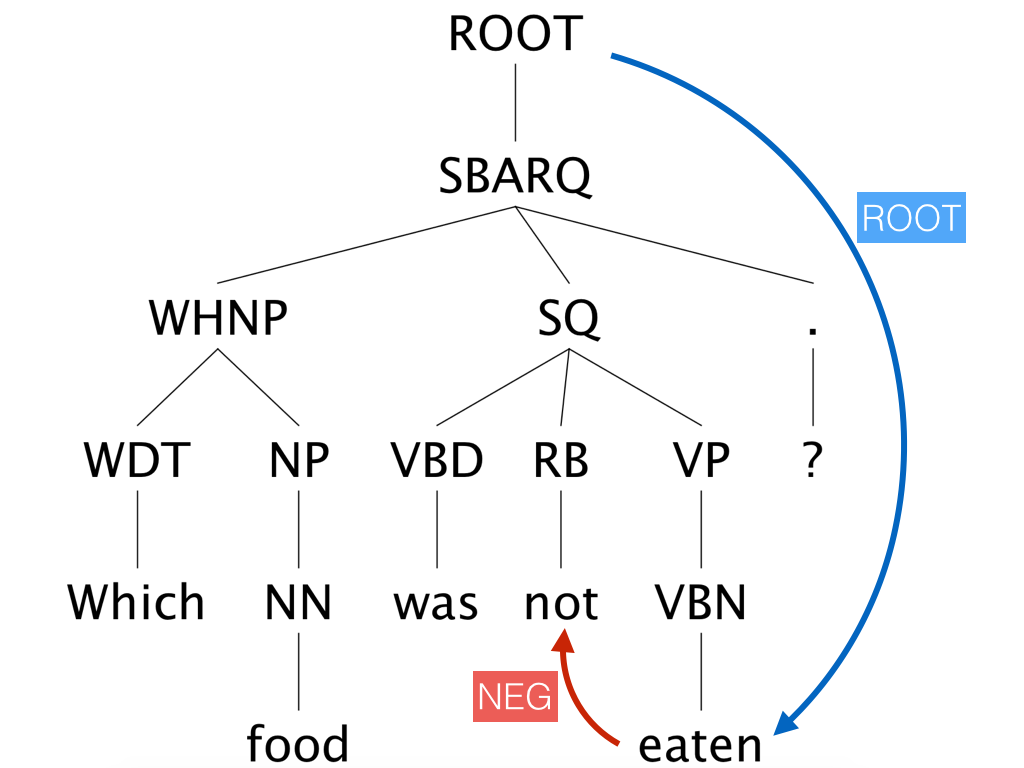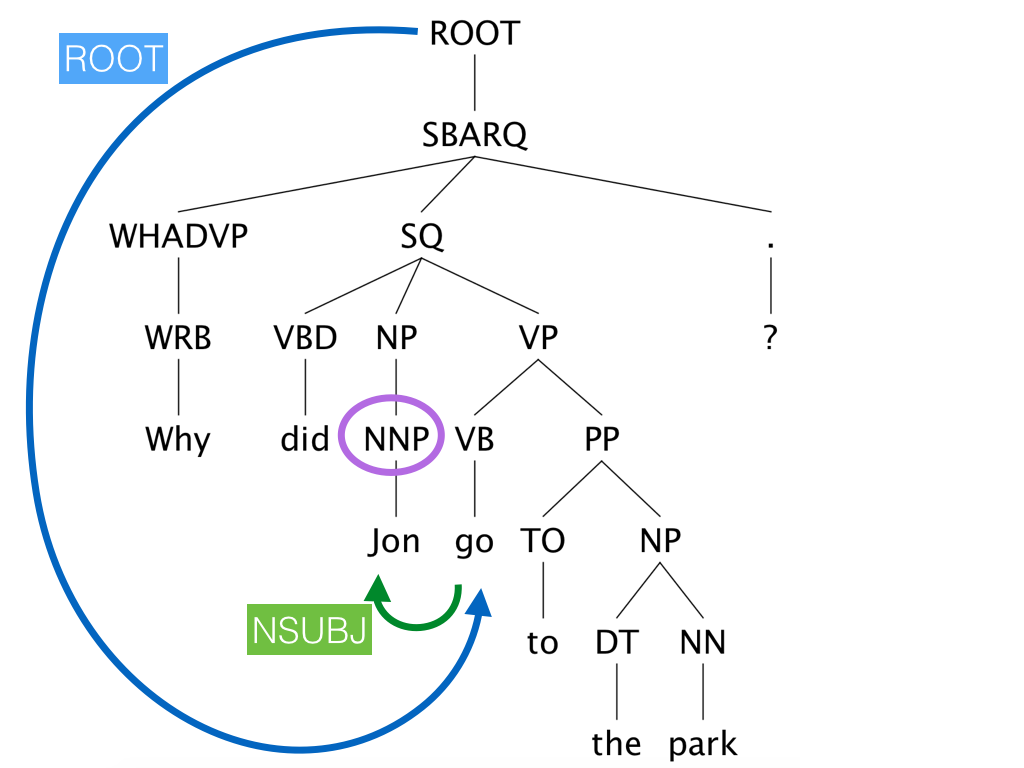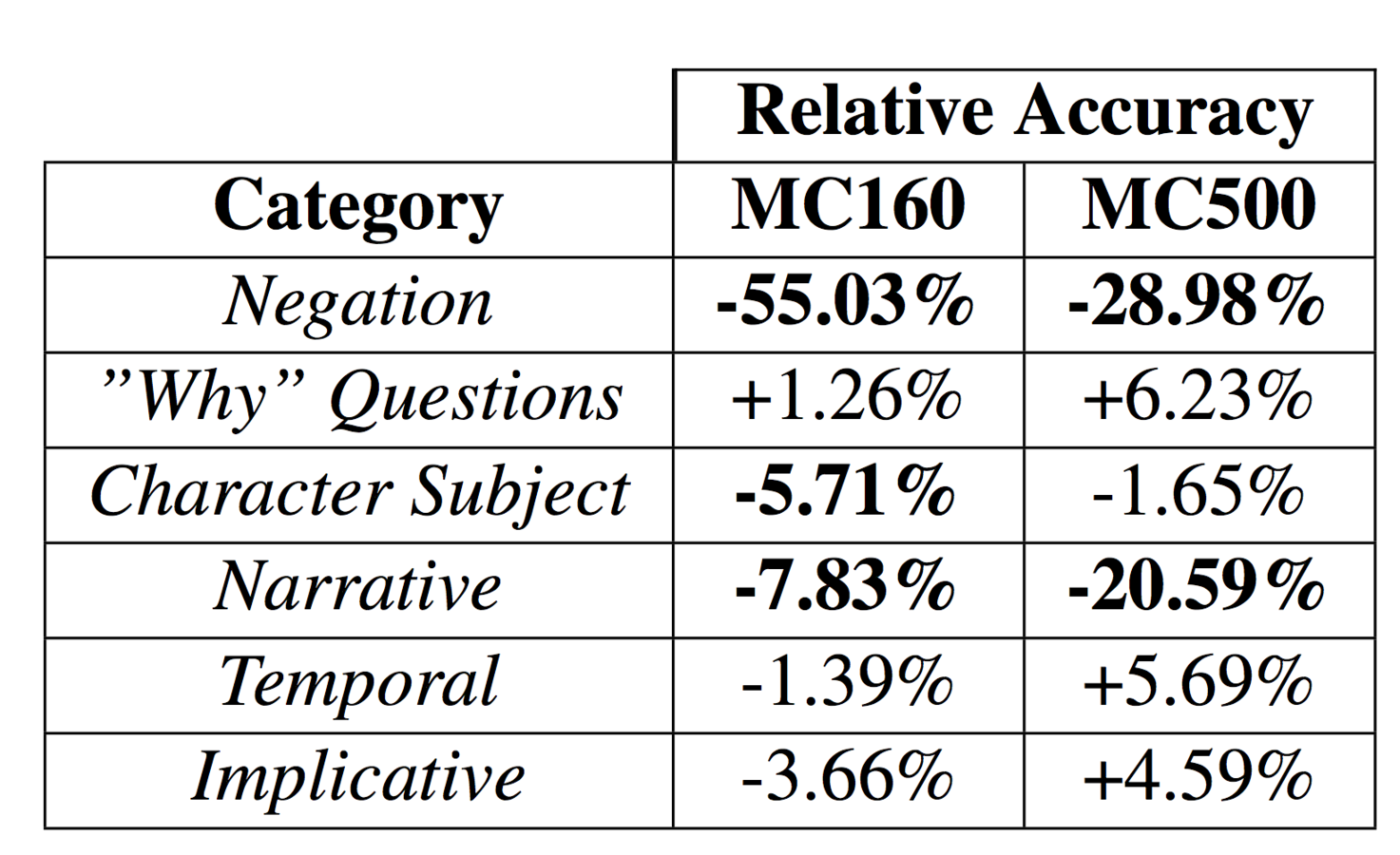The limits of shallow approaches on
MCTest
Previous work on
Question Answering
- SAT-style, Zweig and Burges 2012
- DeepRead, Hirschman et al. 1999
- DeepSelection, Yu et al. 2014
- QANTA, Iyyer et al. 2014
MCTest
- Multiple choice
- Two question types
- Open-domain
- Common sense
- Children stories
- Fictional settings

Single
Multiple
Inviting Giraffes to parties (160test Q33)
The blue ball said hello (160dev Q7)
Owls having socks (160dev Q10)
MC160
MC500
TRAIN DEV TEST
TRAIN DEV TEST
Quality check by hand
Quality check by algorithm
Project Goal
- Limit of shallow approaches
- Exploring Rule-based system
- Improve upon original baseline
Results
MC160
MC500

69.3%
63.3%

73.5%
64.2%
4%
1%
+70% First
SHALLOW METHODS
It was Jessie Bear's birthday. She was having a party. She asked her two best friends to come to the party. She made a big cake, and hung up some balloons
- A) Jessie Bear
- B) no one
- C) Lion
- D) Tiger
be
be
have
ask
she
friend
make
hang
be
have
LEMMATISATION
STOPWORDS
COREFERENCE
1) Who was having a birthday?
Jessie
Jessie
Jessie
Jessie
Jessie birthday.
party.
ask two friend come party.
make big cake hang balloon
- A) Jessie
- B) no one
- C) Lion
- D) Tiger
birthday
birthday
birthday
birthday
2
1
1
1
QA combining
matching
Scoring
Word Matching (WM)
Single 67.88% 62.76%
Multi 50.31% 46.72%
All 58.43% 53.97%
on train+dev sets
MC160
All +3.26% +1.49%
+ co-reference
MC500
What did John do at the beach?
John was at the beach. It was a very warm day.
He decided to go for a swim.
- -went for a swim
Sentence selection
window up to 3 senteces
Hypernymy

Peter the puppy.
Who is the animal?
puppy (1.0) -> dog (0.5) -> animal (0.3)
Word Matching would score 0
Hypernym would score 0.3
animal
All 58.43% 53.97%MC160
All +1.55% +1.48%
+ hypernym
MC500
Word Matching
Rule-based systems
Implementation
def applyTransformations(Story):
if matchesRuleA(question):
Story = applyTransformationA(Story)
if matchesRuleB(question):
Story = applyTransformationB(Story)
if matchesRuleC(question):
Story = applyTransformationC(Story)
...
return StoryApplying a series of transformations to the story when a question matches patterns
Rules we explored
Syntactic pattern matching
- Negation
- Why questions
- Character subject
- Narrative
- Temporal
- Implicative
Negation rule
Which food was not eaten?

Hence,
negate the weights
of word tokens
100% accurate
Solution
Character-subject rule
Why did Jon go to the park?

Hence,
we introduce coreference to accurately locate the character
Solution
Result

70.3% 59.6%
MC160
MC500
on training set
Analysis

Using this system we
- can analyze the performance
- can understand the limitations
of a lexical system
Limitations
What two characters are in this book?
This is a story of a girl and what kind of animal?
What is the name of the boy in the story?
Lexical system has no understanding of narrative or characters.
Learning a
Scoring function
SVM
WM+Coref
WM+Hypernym
WM+Coref Selection on Q
WM+Coref
WM+Coref Selection on QA
WM+Coref
WM+Coref Selection on QA
WM+Hypernym
WM+Hypernym Selection on QA
WM+Coref
Platt Scaling
Shallow methods
MC160
MC500

68.0%
59.9%

71.4%
60.2%
3.4%
0.3%
SW+D
SVM
(combined)
Textual Entailment
Augmented our Rule-based system with RTE BIUTEE
RTE Result
MC160
MC500


SW+D
+RTE
RBS
+RTE
69.3%
63.3%
73.5%
64.2%
4.2%
0.9%
Conclusions

MC160 can be beaten
by shallow methods
MC500 requires deeper
understanding of natural language
Shallow methods have a limit
74%
- More sophisticated Rule-based system
- Natural Logic (Angeli and Manning 2014)
- Deep Sentence Selection (Yu et al. 2014)
Future
Questions?
:)
MCTest
By Nicola Greco
MCTest
- 2,340


